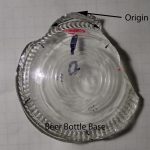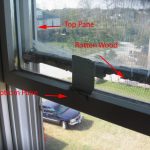Traditionally, a top loading clothes washer has a steel top. This means that a person can safely put part of their weight on the washer top. Recently, some manufacturers have replaced the steel top with a piece of tempered glass (on the order of 1/8” thick) darkened on the bottom with a glass frit coating […]
Glass Bottle Failure Analysis: An Exploding Beer Bottle
Read Consulting LLC failure analysis laboratory was asked to determine why a 12 oz beer bottle “exploded” and injured a bar patron. Very little of the bottle was preserved. Fortunately a major portion of the bottle base was saved and it contained one half of the failure origin. In this case the glass failure analysis […]
Engineering Support for Patent Disputes
Read Consulting has provided patent expertise for wide variety of device design and process patents. We have participated in numerous patent disputes. These include the following Equipment patent claims; these include equipment for thin film deposition, reactive ion etching, and printed circuit board processing . Device Patents: Semi conductor devices, automobile mirrors and furniture Other […]
Plant Grow Light Failure: Tempered Glass Cover Plate
In addition to doors and windows, tempered soda lime glass is being used for numerous applications that require heat resistance. For example, it is being used for oven door windows. Below is an example of a specific application for a heat resistant glass. A company manufacturing grow lamps had the lamps in a recessed reflective […]
Window Expert Examines Clad Wood Windows Failures
Clad wood windows are attractive and supposedly practical. These windows are clad on the outside with either vinyl or metal. The window interior is bare wood. The idea is to have an attractive interior and a protected exterior that is pre-finished and needs little or no maintenance. Read Consulting examined metal clad wood windows that […]
- « Previous Page
- 1
- …
- 6
- 7
- 8
- 9
- 10
- …
- 61
- Next Page »








